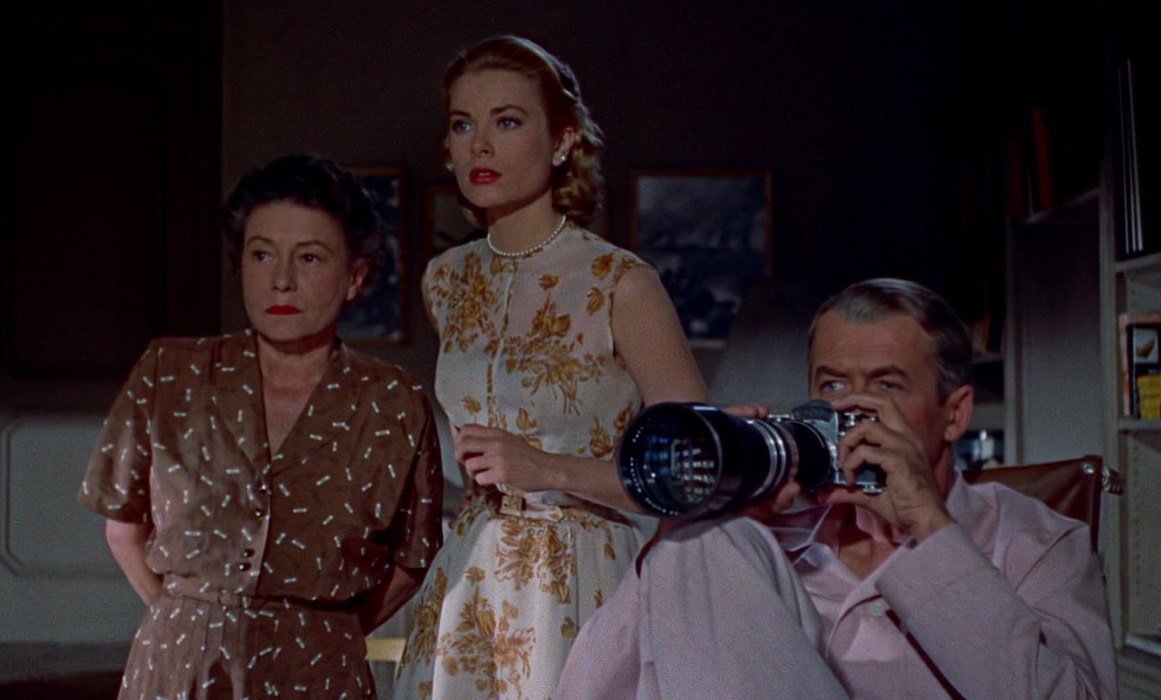Rear windowa reference to cinema
Rear window (1955) is one of the many films ofAlfred Hitchcock have a strong influence on cinema. The film is a pure behind-closed-doors thriller, set in the apartment of Jeff Jefferies, a committed photographer in a wheelchair after breaking his leg while reporting. Being forced to stay at home, he has no other occupation than to observe your neighbors through the window.
Newlyweds, an old couple with a dog, a music composer or even a depressed woman on the verge of suicide… These are the different characters that appear before Jeff. But things take a different turn when the voyeur notices something suspicious in the apartment opposite his house.
In fact, the woman who lived there has disappeared. And her dark-looking husband walks back and forth several times at night with a huge suitcase. It didn’t take Jeff long to imagine the worst: a murder! It is then with the help of Lisa Fremont, his friend who would like him to decide to marry her, that they will try to find proof that a tragedy actually happened.
Alfred Hitchcock’s influences
Rear window it is simply brilliant thanks to a masterful staging and a crazy and clever scenario. In it nothing is left to chance and every detail gives an indication of the character of the characters and their situation. A timeless masterpiece by Hitchcock, brought forward by James Stewart and Grace Kellyand inspired by two real murders.
Indeed, although we have to the scenario of Rear window to John Michael Hayes, adapted from a story by William Irish, by which Alfred Hitchcock was greatly influenced two British news stories. This is what he states in the book of interviews with François Truffaut in which the two filmmakers retrace the Briton’s entire filmography.

In it, Hitchcock specifies that his screenwriter was primarily responsible for the film’s dialogue. But for the murder issue in the film was inspired of the Patrick Mahon case and the Crippen case. The similarities of these two cases to his work range from the cutting up of bodies and the use of a trunk to make them disappear, to the question of jewels as an indicator of guilt.
The Patrick Mahon case
The first was the murder of Emily Kaye, 38, murdered in 1924 by her lover Patrick Mahon after an argument. As Hitchcock tells it in the book, the killer killed this woman in a bungalow on the coast in the south of England. Then it would pass several days of dismemberment of the victim’s body transport it in a trunk. Then, to get rid of it, he”There scattered piece by piece through the door of a train. But she didn’t know what to do with her head“.
This is what gave me the idea to look for the victim’s head in “Rear Window.” Patrick Mahon put his head in the fireplace and lit the fire to burn it.
Ultimately it was Patrick Mahon’s wife, Jessie Mahon, who led Scotland Yard to investigate her husband. Finding her comings and goings suspicious of her (as she was about to tear up Emily Kaye’s body), and imagining that she was having an affair, she went through her things and found a ticket to a locker at Waterloo station . It was there that she found it a bag containing a large knife and with blood stains. He then contacted the police who, after analyzing the blood, trapped Patrick Mahon at the station while he tried to recover the bag.

The killer was quick to confess, claiming that Emily Kaye’s death was accidental. The victim fell head first into an object and, presumably, into Patrick Mahon he tried to revive her for several hours before realizing she was dead. He therefore considered himself innocent, but was found guilty of the murder of Emily Kaye and hanged in London 3 September 1924.
The Crippen case
Hawley Harvey Crippen was a doctor who killed his wife Cora Turner and cut her into pieces to make her body disappear. Just like inside Rear window, his wife’s disappearance was initially questioned and the killer justified it by explaining that she had gone on a trip. Except that, as Hitchcock tells it, “Dr. Crippen made a big mistake : His secretary was wearing some of his wife’s jewelry and, because of this, the neighbors started gossiping“.
In fact, Crippen had begun a relationship with his secretary Ethel Le Neve. In love with her, he asked Cora Turner to divorce him so he could marry this other woman. Having rejected her, Crippen decided to make her disappear along with her jewels. To which it refers Rear windowit’s obvious the victim’s ring what Lisa finds in the killer’s apartment.
If the woman had really gone on a trip, she would have brought the wedding ring with her…

Scotland Yard police officers then carried out investigations into Crippen, but found nothing. The doctor provides logical and plausible explanations for his wife’s absence. He still ran away with his lover. To find it, the police used it for the first time wireless transmissionsthus making it possible to locate it on the ship Montrose bound for Montreal.
Alfred Hitchcock says that the ship’s captain noticed a suspicious-looking Mr. Robinson. It was obviously a disguise. But, according to descriptions, Dr. Crippen was wearing double frames and had a mark on his nose. The captain noticed these details and reached out Inspector Drew who went there. The man was then arrested, then hangedwhile his lover was acquitted.
Source: Cine Serie
Ray Ortiz is a journalist at Gossipify, known for his coverage of trending news and current events. He is committed to providing readers with accurate and unbiased reporting, and is respected for his ability to keep readers informed on the latest news and issues.









